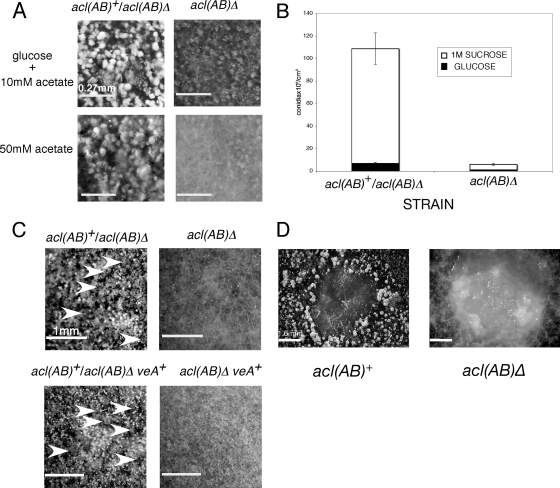Fig. 5.
Effects of deletion of aclA and aclB on conidiation and sexual development. (A) Reduced conidiation in the the acl(AB)Δ strain compared to the complemented strain. (B) Viable conidial counts of the acl(AB)Δ strain compared to the complemented strain. One molar sucrose increased the number of conidia for both strains: 7-fold for acl(AB)Δ and 20-fold for the complemented strain. Acetate at 10 mM was present in all media. (C) Loss of sexual development in the acl(AB)Δ strain. White arrowheads indicate mature cleistothecia. Sexual development was not restored in the veA+ background. Selfed crosses were set up on 1% glucose medium containing 10 mM acetate and allowed to develop for 14 days. (D) Sexual development was not restored by oleate-Tween 80. Conidia of each strain were streaked on thick crossing plates containing 1% glucose and 10 mM acetate and incubated for 1 day, and then a drop of 1 M oleate mixed with a drop of Tween 80 was added to the plates. After a further incubation for 1 day, plates were sealed and incubated for 10 days. A dense ring of mature cleistothecia formed around the oleate in the wild-type strain but not in the acl(AB)Δ strain.

